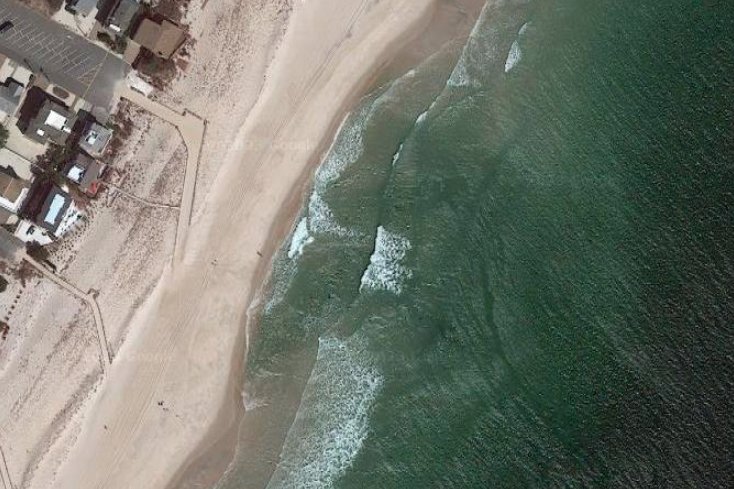
September 05, 2023
 SCREEN CAPTURE/GOOGLE MAPS
SCREEN CAPTURE/GOOGLE MAPS
Rip currents at the Jersey Shore created hazardous conditions over Labor Day weekend. Two swimmers drowned and another, who is missing, is feared dead. The Google Maps photo above shows Belmar, New Jersey, where one swimmer died Monday.
The last weekend of the summer season at the Jersey Shore was a deadly one. Two swimmers drowned Sunday and another is presumed dead after rip currents created hazardous swimming conditions in multiple beach towns.
A 22-year-old man drowned in Beach Haven, Long Beach Island after getting swept away by a rip current, and a 42-year-old man died in Belmar, according to multiple news reports. The search for a 31-year-old man who went missing while swimming at Seaside Heights has been called off.
In Beach Haven, lifeguards formed a human chain in an effort to rescue two swimmers and recover the body of the man who drowned there shortly after 6 p.m.
Meanwhile, the U.S. Coast Guard and other agencies were busy executing a similar rescue mission in Seaside Heights. They ultimately pulled five distressed swimmers from the water around 6:30 p.m. A sixth swimmer has not been found.
Earlier, in Delmar, six swimmers were pulled from the water at the Sixth Avenue Beach. One of them was unresponsive and taken to the hospital, where he was pronounced dead.
The National Weather Service issued an advisory about the dangerous rip currents at beaches in Delaware and New Jersey, warning that "rip currents can sweep even the best swimmers away from shore into deeper waters" and urging beachgoers to swim near a lifeguard. The rip current advisory will remain in effect until Tuesday evening.
Rip currents are strong, narrow currents of water that can occur in the ocean near the shore where the waves break. The currents can pull unsuspecting swimmers further out into deeper water, often by surprise. The National Weather Service encourages people to avoid swimming at beaches when there are no lifeguards on duty.
If caught in a rip current, the best escape method is to turn sideways to the shore, and wade or swim until free from the rip current, the National Weather Service says. Then, move back toward shore at an angle that is away from the rush of water. Trying to swim straight to shore against a rip tide is too difficult, even for strong swimmers.